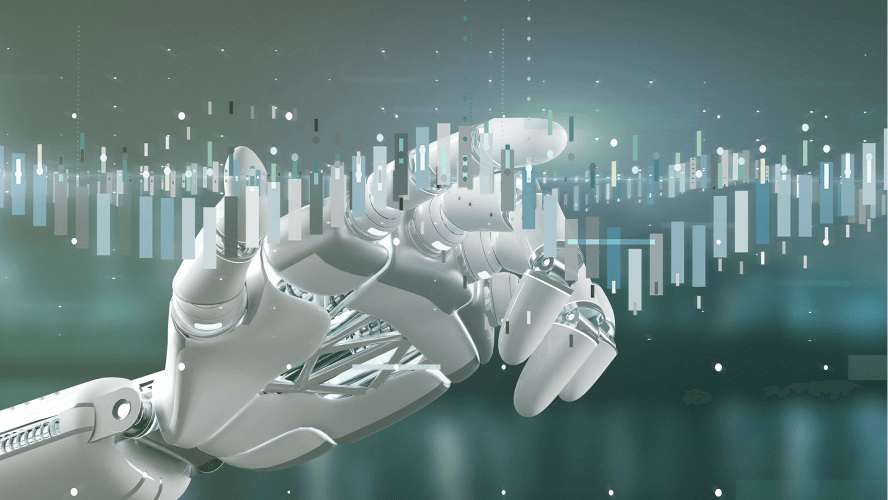“The waiting is the hardest part,” Tom Petty sings in the famous Tom Petty and the Heartbreakers song. He really nails the impatience many of us feel throughout our daily lives with this one, simple line. Waiting for something is this weird in-between state where you can’t really do anything to get where you want to go except just…well, wait. And when it comes to trading your money according to a certain strategy and constantly watching the market for your conditions, the waiting is not only difficult but can also result in anxiety and impulsive decision making.
We’re only human
Advanced as we are, humans have certain disadvantages when it comes to trading. For one, we are influenced by our feelings. Emotions and moods impact our actions, making it impossible to be objective in any given situation. When it comes to trading, there are three main emotions or states of mind that can get in the way of optimal performance: impatience, greed, and fear.
Impatience can come up when traders are waiting for certain conditions, such as technical indicators, in the market. Watching multiple technical indicators constantly can be exhausting, wearing, and maybe most importantly, boring. After waiting a certain amount of time in which your conditions aren’t realized, it becomes tempting to quit, or perhaps worse, enter into a position even though the market isn’t where you want it to be.

Greed can also negatively influence your trading strategy. For example, let’s say you bought an asset and the price rose past your exit strategy while you were waiting. You hold off on exiting in the hopes that you’ll make greater profits when BAM – the price drops below your original exit strategy. Your greed got in the way of sticking to your strategy and you lost out as a result.
Fear and anxiety can get in the way of your best trading performance when prices drop past your exit point, and rather than exiting the position and cutting your losses, you stay in out of fear, losing more than you bargained for.
Another disadvantage we humans have is the ability to only truly look at and focus on one thing at a time. This makes watching multiple technical indicators at once difficult, requiring traders to try and cycle through them, which can be fatiguing. Not to mention the fact that due to global time differences, forex is traded 24/5, and the crypto market never closes, staying open 24/7. As humans, we do have to sleep, meaning there will inevitably be opportunities that we miss when trading manually. Also, there are thousands of assets available to trade, and the idea alone of keeping track of multiple technical indicators on multiple assets several hours a day is dizzying, not to mention the reality of it.
Imagine you are trying to profit from trading. You know where you want the market to be when you go long (buy), and under what conditions you would want to go short (sell). Now you have to monitor your screen and wait for those conditions to happen so you can carry out your plan. This waiting is especially difficult because it’s not passive, like waiting for merchandise you ordered online to ship to you. It often involves watching several technical indicators, waiting for conditions to align just the way you want them before you can make your move.
Right?
The silver lining
As it turns out, there’s another way. More recently in the timeline of trading, computer programmers have found a way to program algorithmic trading, a form of trading in which an algorithm basically does the waiting and watching for you, and then sends trading orders according to the conditions you set for it.

Richard Donchian introduced the concept of automated trading in 1949, buying and selling funds according to rules he set. John Henry popularised rule-based trading in the 80s and models were available for purchase by the 90s, though they were mainly used by financial managers and brokers for managing their clients’ portfolios rather than for individual retail traders.
As the technology matured, automated trading became more accessible for retail traders, though they either had to know how to code or pay a lot of money. There are also systems traders can use for less money for which they must learn a simplified coding system, or some other system that requires multiple steps and rules.
Automated trading systems have become so popular that they now generate 80% of the global trading volumes in the financial markets (source). This is because machines executing algorithms have several advantages over humans.
For one, machines don’t have emotions. They do what they are programmed to do, sticking to the plan without the influence of impatience, greed, fear, or anxiety.
Also, they can process massive quantities of different types of data at speeds humans simply cannot work at.
So while it makes sense to create your own strategy, algorithmic machines can execute it more efficiently and faithfully. And whereas automated trading systems were initially only available for hedge funds and banks, the tide has been changing, and they are now more accessible to retail traders.
Don’t want to spend inordinate amounts of money, entrust your funds with a bot, or learn a complicated system? Try Capitalise, the world’s first, most easily accessible platform automating your trading plan based on plain English sentences – no coding required! All you have to do is write if-then strategies into our wizard. Our algorithms will take care of the rest for you.
For example:

So what are you waiting for? Go to the Capitalise wizard now and see just how easy automating your trades can be!
